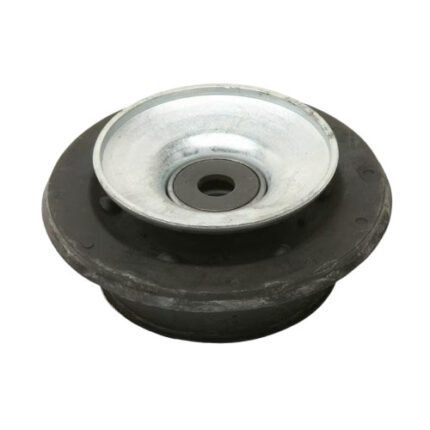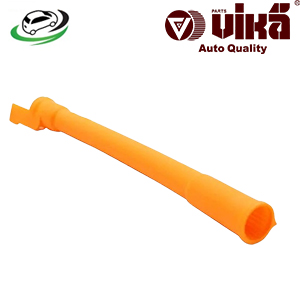Get Oil Dipstick Tube VW Golf GLS TDI/ Jetta TDI Wagon/ Beetle GL/GLS/ Jetta TDI Sedan/ Golf TDI Hatchback 38103663
The oil dipstick tube is a fundamental component of a vehicle’s engine, playing a crucial role in maintaining proper oil levels and ensuring the engine’s efficient operation. Located within the engine compartment, this tube provides a means to measure and monitor the engine oil level, which is essential for engine health and performance. In this comprehensive guide, we will explore the function, construction, types, benefits, signs of wear, and maintenance of the oil dipstick tube in 1000 words.
Function of the Oil Dipstick Tube
The primary function of the oil dipstick tube is to provide a conduit for the oil dipstick, which is used to measure the engine oil level. This tube serves several essential purposes:
- Oil Level Measurement:
- The dipstick tube allows the oil dipstick to be inserted into the engine to measure the oil level. This measurement is crucial for ensuring that the engine has the proper amount of oil, which is necessary for lubrication and cooling.
- Easy Access for Checking Oil:
- By providing a direct pathway to the oil pan, the dipstick tube makes it easy for vehicle owners and mechanics to check the oil level and condition regularly.
- Prevents Contamination:
- The tube helps to prevent contaminants, such as dirt and debris, from entering the engine oil. A properly sealed dipstick tube ensures that only clean oil is measured and used for lubrication.
- Facilitates Oil Maintenance:
- Regular oil checks and maintenance are facilitated by the dipstick tube, ensuring that the engine oil is at the correct level and in good condition.
Components of the Oil Dipstick Tube
The oil dipstick tube is composed of several key components that work together to ensure accurate oil measurement and protection:
- Tube:
- Material: Typically made from metal or high-strength plastic.
- Function: The tube provides a conduit for the dipstick and connects the oil pan to the engine compartment. It must be durable and resistant to high temperatures and oil exposure.
- Dipstick:
- Material: Often made from metal or plastic with measurement markings.
- Function: The dipstick is inserted into the tube to measure the engine oil level. It typically has markings indicating the minimum and maximum oil levels.
- Tube Seal or Grommet:
- Material: Usually made from rubber or a similar sealing material.
- Function: The seal or grommet ensures that the dipstick tube is securely attached to the engine and prevents oil and contaminants from leaking out.
- Cap or Plug:
- Material: Often made from metal or plastic.
- Function: The cap or plug covers the opening of the dipstick tube when the dipstick is removed, helping to prevent contamination and loss of oil.
Types of Oil Dipstick Tubes
There are several types of oil dipstick tubes, each designed for specific engine configurations and applications:
- Straight Dipstick Tube:
- Design: A straight tube that runs vertically from the oil pan to the top of the engine.
- Application: Common in many engine designs, particularly where space allows for a straightforward installation.
- Curved or Angled Dipstick Tube:
- Design: A tube with bends or curves to navigate around engine components.
- Application: Used in engines with limited space or complex engine compartments where a straight tube is impractical.
- Integrated Dipstick Tube:
- Design: A dipstick tube that is integrated into other engine components or assemblies.
- Application: Often found in modern engines where space is optimized, and the dipstick tube is part of a larger assembly.
Benefits of a Properly Functioning Oil Dipstick Tube
A well-maintained and properly functioning oil dipstick tube provides several benefits that contribute to the overall health and efficiency of the engine:
- Accurate Oil Level Measurement:
- Consistency: A properly functioning dipstick tube allows for accurate measurement of the engine oil level, ensuring that the engine has the correct amount of oil for optimal performance.
- Prevents Oil Leaks:
- Protection: The tube and its seals prevent oil from leaking out of the engine, which helps to maintain proper oil levels and avoid potential engine damage.
- Facilitates Regular Maintenance:
- Ease of Access: The dipstick tube provides easy access for checking oil levels, making it simple to perform regular maintenance and ensure that the engine is properly lubricated.
- Protects Engine Components:
- Contamination Prevention: By preventing contaminants from entering the oil, the dipstick tube helps to protect sensitive engine components from damage and wear.
- Supports Engine Longevity:
- Proper Lubrication: Regular oil checks facilitated by the dipstick tube ensure that the engine remains well-lubricated, which is crucial for its longevity and overall performance.
Signs of a Worn or Damaged Oil Dipstick Tube
Over time, the oil dipstick tube can become worn or damaged due to exposure to heat, oil, and other environmental factors. Recognizing the signs of a faulty dipstick tube is essential for timely maintenance and repair:
- Oil Leaks:
- Symptom: Visible oil leaks around the dipstick tube or oil pan can indicate a damaged or improperly sealed dipstick tube.
- Difficulty in Measuring Oil Level:
- Symptom: Difficulty inserting or removing the dipstick, or inconsistent oil level readings, can indicate a problem with the dipstick tube or dipstick.
- Engine Noise or Performance Issues:
- Symptom: Unusual engine noises or performance issues may result from low oil levels due to a faulty dipstick tube.
- Contaminated Oil:
- Symptom: Contaminated oil or debris in the oil can be a sign that the dipstick tube is not properly sealing or protecting the engine.
- Loose or Misaligned Tube:
- Symptom: A loose or misaligned dipstick tube may indicate that the tube is damaged or not properly secured, which can lead to oil leaks or measurement issues.
Maintenance and Replacement
Regular maintenance and timely replacement of the oil dipstick tube are crucial for ensuring proper engine function and avoiding potential problems:
- Inspection:
- Routine Checks: Inspect the dipstick tube and its components regularly for signs of wear, damage, or leaks. Ensure that the tube is securely attached and that the dipstick is functioning correctly.
- Cleaning:
- Maintenance: Clean the dipstick and tube regularly to remove any dirt or debris that may affect measurement accuracy or cause contamination.
- Replacement Interval:
- Manufacturer’s Recommendations: Follow the manufacturer’s recommendations for dipstick tube replacement or maintenance intervals. Replacement may be necessary if signs of damage or wear are observed.
- Professional Replacement:
- Expert Installation: If the dipstick tube is damaged or needs replacement, it is recommended to have a professional mechanic perform the replacement to ensure proper installation and sealing.
- Seal and Grommet Replacement:
- Seal Maintenance: If the tube seal or grommet is worn or damaged, replace it promptly to prevent oil leaks and ensure proper sealing.
Follow us on Facebook for more parts.



